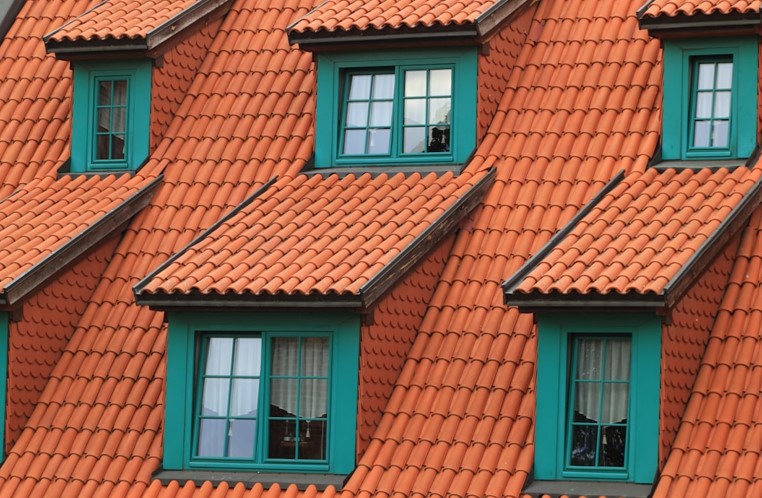Proactive roof management is an essential aspect of property management that often gets overlooked until it's too late. The roof is one of the most critical components of any building, providing protection against the elements and contributing to the overall structural integrity. For property managers, staying ahead of roof problems is crucial for maintaining property value, ensuring tenant satisfaction, and avoiding costly repairs. In this blog post, we’ll delve into the four most common roof problems property managers face and provide actionable strategies to tackle these issues head-on.
1. Leaks and Water Damage
Causes
Roof leaks and water damage are among the most prevalent issues property managers encounter. These problems can stem from various sources, such as damaged shingles, faulty flashing, clogged gutters, or poor roof design. Even small leaks can escalate into significant issues if left unaddressed.
Signs to Look Out For
- Water Stains: Look for discoloration on ceilings and walls, which often indicates water infiltration.
- Dripping Water: Listen for the sound of dripping in the attic or upper floors.
- Mold Growth: A telltale sign of long-term moisture problems.
- Musty Odors: Persistent damp smells can signify hidden water damage.
Immediate and Long-Term Impacts
- Structural Damage: Prolonged exposure to moisture can weaken the roof structure, leading to more severe problems.
- Mold and Mildew: These not only damage the property but can also pose health risks to tenants.
- Increased Repair Costs: Delaying repairs can result in more extensive and expensive fixes down the line.
2. Shingle or Tile Deterioration
Causes
Over time, shingles and tiles can deteriorate due to weather conditions, age, and physical damage. High winds, hail, and UV rays are common culprits that contribute to the wear and tear of roofing materials.
Signs to Look Out For
- Missing or Broken Shingles/Tiles: Visible gaps or breakage on the roof surface.
- Curling or Buckling: Shingles or tiles that aren’t lying flat could be a sign of aging or underlying issues.
- Granule Loss: Check for granules in gutters, as excessive loss indicates shingle deterioration.
Immediate and Long-Term Impacts
- Water Infiltration: Damaged shingles or tiles create entry points for water.
- Reduced Insulation: Compromised roofing materials affect the building’s insulation, leading to higher energy costs.
- Decreased Aesthetic Appeal and Property Value: A deteriorating roof can negatively impact property value and curb appeal.
3. Pooled Water and Drainage Issues
Causes
Flat or low-sloped roofs are particularly susceptible to pooling water. Poor drainage systems clogged gutters, and inadequate roof slopes can lead to standing water on the roof surface.
Signs to Look Out For
- Visible Pools of Water: After rainfall, check for standing water on the roof.
- Sagging Roof Sections: Areas of the roof that appear to dip or sag under the weight of water.
- Algae or Plant Growth: Vegetation growing on the roof can indicate persistent water pooling.
Immediate and Long-Term Impacts
- Structural Strain: Pooling water adds significant weight, straining the roof structure.
- Accelerated Deterioration: Standing water speeds up the deterioration of roofing materials.
- Leak Risks: Prolonged water exposure increases the risk of leaks and subsequent water damage.
4. Neglected Maintenance Leading to Premature Wear
Causes
Routine maintenance is often deferred due to budget constraints or oversight, leading to cumulative damage that accelerates roof wear and tear. Neglecting small issues can result in larger, more costly problems.
Signs to Look Out For
- Overall Deterioration: General signs of wear and tear across the roof.
- Unaddressed Minor Issues: Small problems that have been overlooked and are worsening.
- Lack of Maintenance Records: No documentation of regular inspections or repairs.
Immediate and Long-Term Impacts
- Costly Repairs: Small, inexpensive repairs can become major expenses if neglected.
- Shortened Roof Lifespan: Lack of maintenance reduces the overall lifespan of the roof.
- Tenant Dissatisfaction: Persistent roofing issues can lead to unhappy tenants and increased turnover.
Proactive Maintenance and Management Strategies
To prevent these common roof problems, property managers should adopt a proactive maintenance approach. Here are some key strategies:
Regular Inspections
Conduct thorough roof inspections at least twice a year and after significant weather events. Look for signs of wear, damage, and potential problem areas. Early detection allows for timely repairs and can prevent minor issues from becoming major headaches. And, finding a roofing company that understands the nuances of property management can make this process even easier. Just look online for some professionals who can help you out.
Prompt Repairs
Address any identified issues immediately. Whether it's a small leak or a few damaged shingles, prompt repairs can save you from more extensive and expensive damage in the future.
Long-Term Maintenance Plans
Develop and implement a long-term roof maintenance plan. This plan should include routine inspections, regular gutter cleaning, and periodic professional assessments. A structured plan ensures that maintenance tasks are performed consistently and effectively.
Effective roof management is a critical responsibility for property managers. By understanding and addressing common roof problems such as leaks, shingle deterioration, pooled water, and neglected maintenance, you can protect your property, enhance its value, and ensure tenant satisfaction. Prioritizing proactive roof management not only prevents costly repairs but also contributes to the longevity and safety of your buildings.
If you need professional advice or assistance with your roof management strategy, don't hesitate to reach out to experts in the field. Taking action today can prevent headaches tomorrow.










